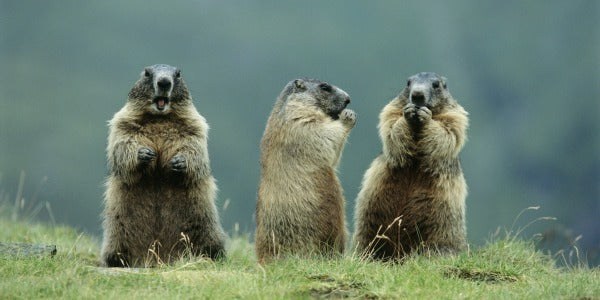Mammal Study Ideas

Mammals have certain characteristics that set them apart from other animals. Mammals, in contrast to fishes, amphibians, and reptiles, are warm-blooded animals, as are birds. The skin of most mammals is more or less hairy, in contrast to the scale-covered fish and the feathered birds. The young of most mammals are born alive, whereas the young of birds, fish, amphibians, and some species of reptiles hatch from eggs. After birth young mammals breathe by lungs rather than by gills as do the fish; for a time they are nourished with milk produced by the mother. Great variations exist in the mammal group. Some of the typical animals in the mammal group which illustrate these variations are opossum, armadillo, whale, deer, buffalo, rabbit, mouse, woodchuck, mole, bat, bear, horse, cat, dog, and man. Man has always depended a great deal on the lower mammal forms; he uses them for food, clothing, transportation, and numerous other purposes. Many forms are domesticated and have served as man’s obedient servants for many centuries. Some of the so-called game animals have suffered wanton destruction at the hands of “civilized man,” but in more recent years many laws and regulations have been passed to give these animals more chances to live. Even more stringent laws are needed and rigid enforcement must be exacted if wild animals in general are to be expected to increase in number. - Handbook Of Nature Study page 214
 When most children think of animals they think of mammals. They picture furry creatures such as dogs, cats, and bunnies. They might, also, think of mammals found on the farm such as cows, horses, and pigs. People in general are drawn to warm, fuzzy mammals more often than the scaly snakes or crawling insects.
Studying mammals is a great way to teach children about God’s creation. Let them study the variations, the similarities, the habitats, and the interactions of mammals with other animals and their environments. This will help them develop an appreciation of nature and how it was created.
When most children think of animals they think of mammals. They picture furry creatures such as dogs, cats, and bunnies. They might, also, think of mammals found on the farm such as cows, horses, and pigs. People in general are drawn to warm, fuzzy mammals more often than the scaly snakes or crawling insects.
Studying mammals is a great way to teach children about God’s creation. Let them study the variations, the similarities, the habitats, and the interactions of mammals with other animals and their environments. This will help them develop an appreciation of nature and how it was created.











